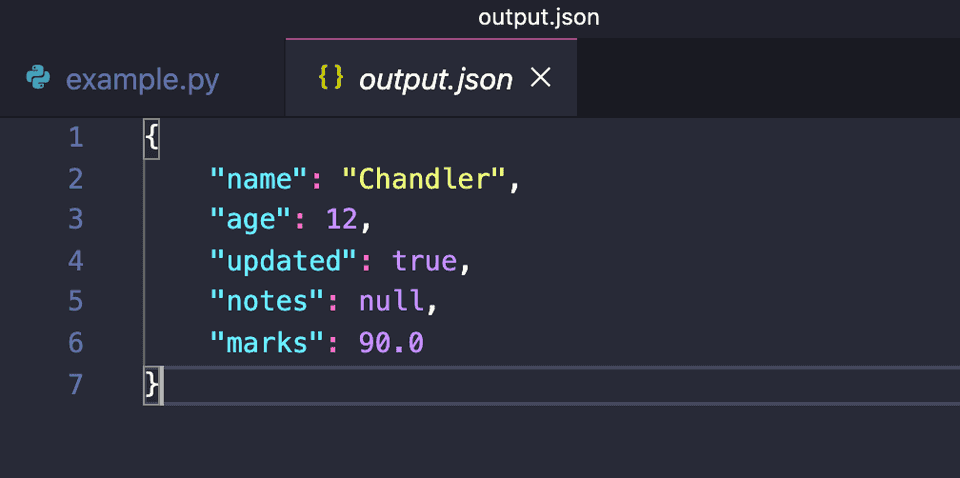How to read and write data from a JSON file in python
JavaScript Object Notation or JSON is one of the most commonly used data interchanging format. It is a language independent format and can be used in any language in the same way.
Python provides one built in package called json to work with JSON data. JSON data is mostly consists of key-value pairs like python dictionary. Using json module, we can easily convert JSON data to a dictionary and a dictionary to JSON.
Writing JSON to a file and reading JSON data from a file can be done easily with json module.
Writing JSON data to a file:
JSON is like a dictionary in python. TO write JSON value to a file, we can write one dictionary to a file. Python json module provides two methods: dump and dumps. Both methods can be used to convert one dictionary to JSON.
The conversion to and from JSON to python dictionary uses the below table:
| JSON | Python |
|---|---|
| object | dict |
| string | str |
| array | list |
| int | int |
| real | float |
| true | True |
| false | False |
| null | None |
Write JSON data to a file using json.dump() :
json.dump() method takes two parameters. The first one is the python dictionary that we need to convert to a JSON and the second one is the file pointer, where we are dumping the data.
It looks as like below:
json.dump(dictionary, file)Let’s take a look at the below example program:
import json
student_dictionary = {
"name": "Chandler",
"age": 12,
"updated": True,
"notes": None,
"marks": 90.0
}
with open("output.json", "w") as out:
json.dump(student_dictionary, out)Here, we are writing the dictionary student_dictionary to a file output.json in the same folder where this python file exists. It will create that json file if it doesn’t exist. If you open that file, it will hold the contents of this dictionary in JSON format :
None is converted to null and True is converted to true as we have seen in the above conversion table.
Write JSON data to file using json.dumps():
json.dumps() actually converts one JSON dictionary to a JSON object. We can write that object to a file.
It is defined as below:
json.dumps(dict, indent)indent is used for indentation. It is useful if you want to pretty print JSON data to a file. Let’s change the above example to use json.dumps() :
import json
student_dictionary = {
"name": "Chandler",
"age": 12,
"updated": True,
"notes": None,
"marks": 90.0
}
student_json = json.dumps(student_dictionary)
with open("output.json", "w") as out:
out.write(student_json)It will write the dictionary to the file as shown in the above example. But, if I use indent :
import json
student_dictionary = {
"name": "Chandler",
"age": 12,
"updated": True,
"notes": None,
"marks": 90.0
}
student_json = json.dumps(student_dictionary, indent=4)
with open("output.json", "w") as out:
out.write(student_json)The data will be formatted in the file:

This is actually useful if you are dealing with a large JSON object.
Reading JSON data from a file:
Reading JSON data means deserialize it to a python dictionary object. You can get the JSON data from any other platform or program and convert it to a python object using this method. json.load() method is used to load JSON from a file to a python object. It takes only file pointer as the parameter. Once we get the python object, we can access its values.
import json
with open("output.json", "r") as input_file:
json_dict = json.load(input_file)
print(json_dict)
print(json_dict["name"])
print(json_dict["age"])If you run this program, it will print the below output:
{'name': 'Chandler', 'age': 12, 'updated': True, 'notes': None, 'marks': 90.0}
Chandler
12You might also like:
- Python tutorial pretty print JSON to console and file
- Python program to convert one string to JSON
- How to check if a email address is valid or not in Python
- How to find if a string is a valid URL or not in Python
- Python example to zip list of lists using zip method
- 3 different ways in Python to convert string to a tuple of integers

